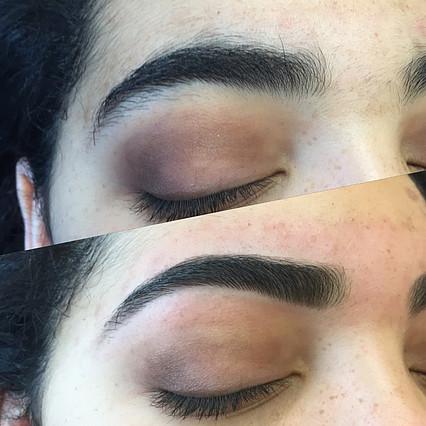To Buy Champix Online Visit Our Pharmacy ↓

Understanding Champix: What It Is and How It Works
Varenicline, marketed as Champix, is an effective prescription medication designed to help individuals quit smoking by blocking nicotine receptors in the brain. This action reduces both the “rewarding” effects of smoking and the symptoms of nicotine withdrawal. Unlike other cessation aids, Champix does not rely on nicotine replacement, making it a unique approach within the pharm land of smoking cessation therapies.
Prescribed following a med rec, Champix is often paired with behavioral therapy to enhance its effectiveness. With the dual approach, patients can address both the physical and psychological aspects of nicotine addiction. But remember, medications like Champix require a script and should always be used under the guidance of healthcare providers to monitor side effects and ensure they fit within a personalized cessation plan.
| Aspect | Description |
|---|---|
| Primary Action | Blocks nicotine receptors |
| Unique Feature | Does not use nicotine replacement |
| Usage with Therapy | Enhances effectiveness of behavioral therapy |
Benefits of Combining Champix with Therapy

Integrating Champix with therapy provides a multifaceted approach to quitting smoking, vastly improving success rates. Champix, an effective prescription medication, helps manage cravings and withdrawal symptoms, creating a solid foundation for behavioral therapies. The synergistic combination of medication and therapy fosters a more holistic treatment, addressing both the physical dependency and psychological habits associated with smoking.
Pairing Champix with cognitive-behavioral therapy (CBT) or support groups offers a comprehensive strategy to modify deeply ingrained patterns. Therapists provide tailored coping mechanisms, helping individuals tackle triggers and stressors that often lead to relapse. This dual approach can transform the quitting process from an overwhelming challenge into a manageable journey.
Moreover, utilizing Champix and therapy together means periodic med recs and health check-ins, allowing practitioners to monitor progress and adjust strategies stat. This continuous, personalized support ensures that both the script and the therapeutic plan evolve in harmony, significantly boosting the chances of achieving and maintaining long-term success.
Choosing the Right Therapist for Your Needs
Finding the right therapist can be as crucial as the Champix script itself in your journey to quit smoking. Start by looking for therapists who specialize in addiction therapy or cognitive-behavioral therapy (CBT). These professionals understand the unique challenges you may face during your treatment and can tailor their approach to suit your specific needs. Sometimes, it’s beneficial to check reviews or get recommendations, ensuring the therapist is someone you feel comfortable with and trust.
Your journey may involve various medications, so it's essential that your therapist and healthcare provider are on the same page. Coordination between them can maximize the effectiveness of your Champix regimen and ensure that any side effects or issues are addressed stat. This collaborative approach often leads to better outcomes and a smoother path towards quitting smoking for good.
Creating a Personalized Treatment Plan

Creating a treatment plan that combines Champix with therapy starts with understanding your unique needs. Consult a skilled white coat professional who specializes in addiction and behavioral therapy. Share your history with them, including any previous attempts to quit smoking and any meds checks you've had. This helps to craft an effective and personalized strategy.
The next step involves setting clear, achievable goals. Your provider will write a script for Champix and also develop a holistic roadmap that includes counseling sessions, behavioral therapy, and possibly joining a support group. The sig on your prescription will serve as the foundation for your progress, ensuring you stay on track.
Regularly reviewing your progress is crucial. Schedule follow-up appointments to adjust your plan based on your experience with Champix and therapy. Your provider might recommend some generics over brand-name medications to ease the financial burden. Consistent check-ins will not only prevent relapses but will also reinforce positive behaviors, making your journey to quit smoking a lasting success.
Monitoring Progress and Adjusting Strategies
Monitoring one's progress while on Champix is crucial, and it requires regular check-ins with both your prescribing doctor and therapist. These sessions help identify how well the script works and whether any adjustments to therapy are needed. Notice how your body responds to Champix and be aware of any side effects or red flags that might warrant a change in strategy. Your therapist can help you navigate these changes, ensuring that the compound medication and therapy work cohesively.
Flexibility is key; treatment plans are not set in stone. If the initial combination doesn't yield the desired results, it may be necessary to titrate the medication or modify the therapeutic approach. Regular Meds Check and open communication ensure that both your Champix script and therapy are working in tandem. Adjustments may involve altering dosages or integrating different therapeutic techniques, and timely feedback is essential to maintain momentum.
Tracking progress isn't just about what’s on paper; emotional and mental well-being count too. Document your experiences and feelings throughout the treatment, and share them during your sessions. Such feedback helps in making informed decisions about whether to make any alterations. With consistent support from your healthcare professionals, adjusting your treatment plan can lead to more effective outcomes and a higher chance of success.
| Session Focus | Details | Frequency |
|---|---|---|
| Doctor Check-ins | Evaluate script effectiveness, side effects, and adjust dosages. | Monthly |
| Therapist Sessions | Monitor emotional well-being, integrate therapy with medication. | Bi-weekly |
| Meds Check | Review and adjust medication strategy. | Quarterly |
Success Stories: Real People, Real Results
Ashley had always struggled with quitting smoking. After multiple failed attempts using various methods, she decided to combine Champix with therapy. Her therapist played an essential role in crafting a personalized treatment plan based on her unique triggers and routines. Within weeks, Ashley noticed substantial progress. The combination of Champix's effects and the psychological support she received empowered her to break free from her smoking habit. Similarly, George, who also faced challenges with smoking cessation, discovered significant improvement through this dual approach. His therapist utilized behavioral strategies alongside the medication, particularly focusing on stress-induced smoking. Today, George celebrates over a year of being cigarette-free, attributing his success to this comprehensive treatment method.
Before & After
Testimonials
Read out what our customers say about our services.
Read Testimonials
Join Our VIP List
Great News!
Comming soon our new location in Fort Worth (Alliance area)
3529 Heritage Trace Parkway, Suite 163
Fort Worth, TX 76244
Sign up now to join our VIP list and receive coupons












